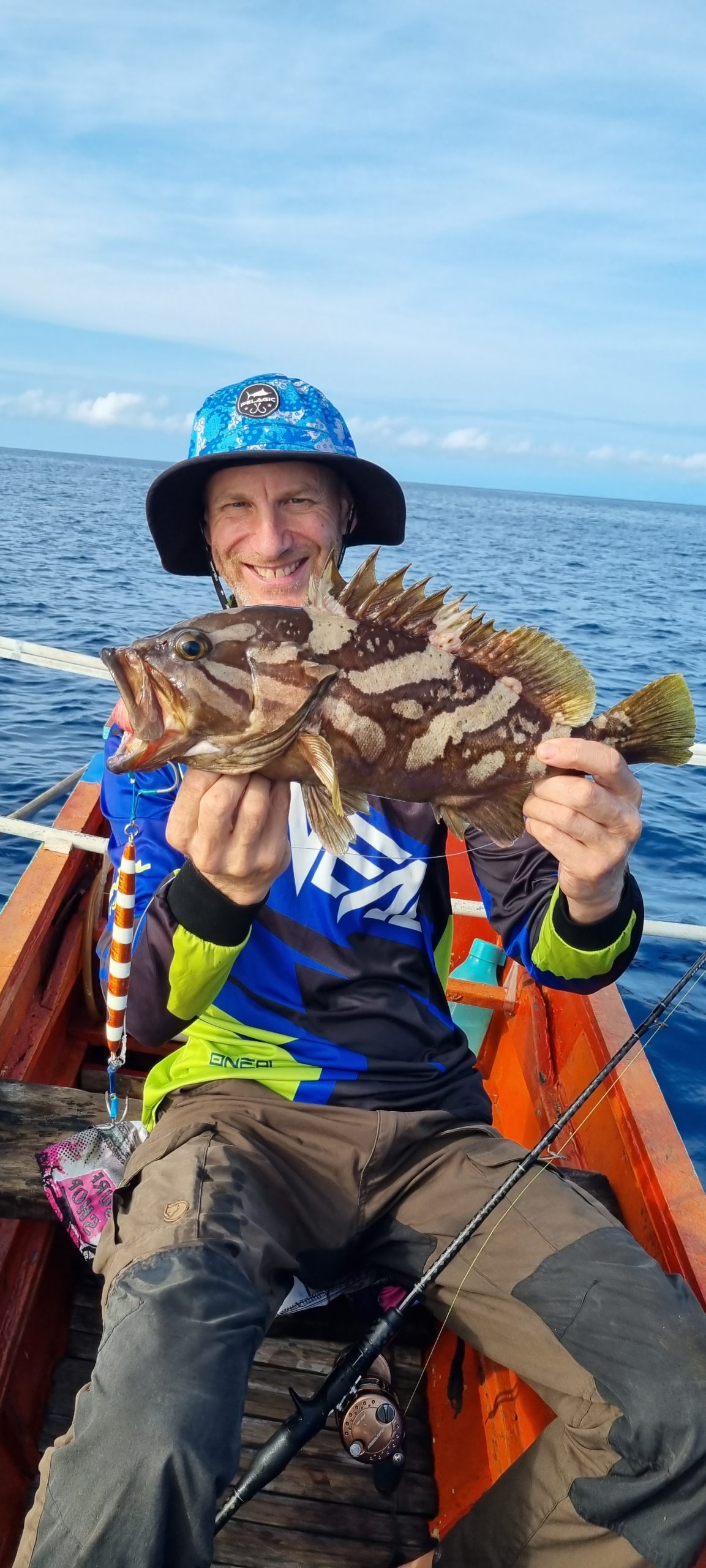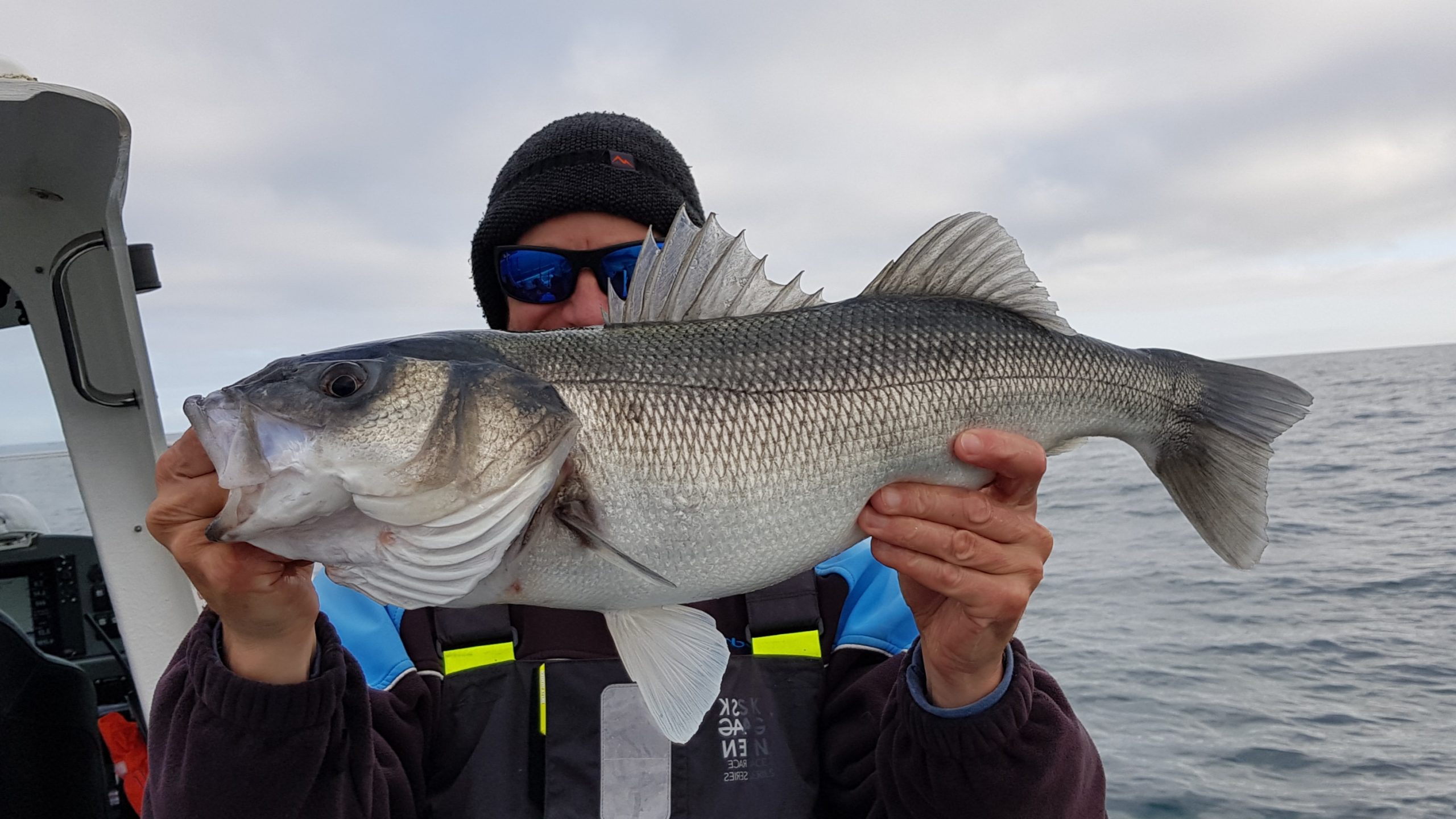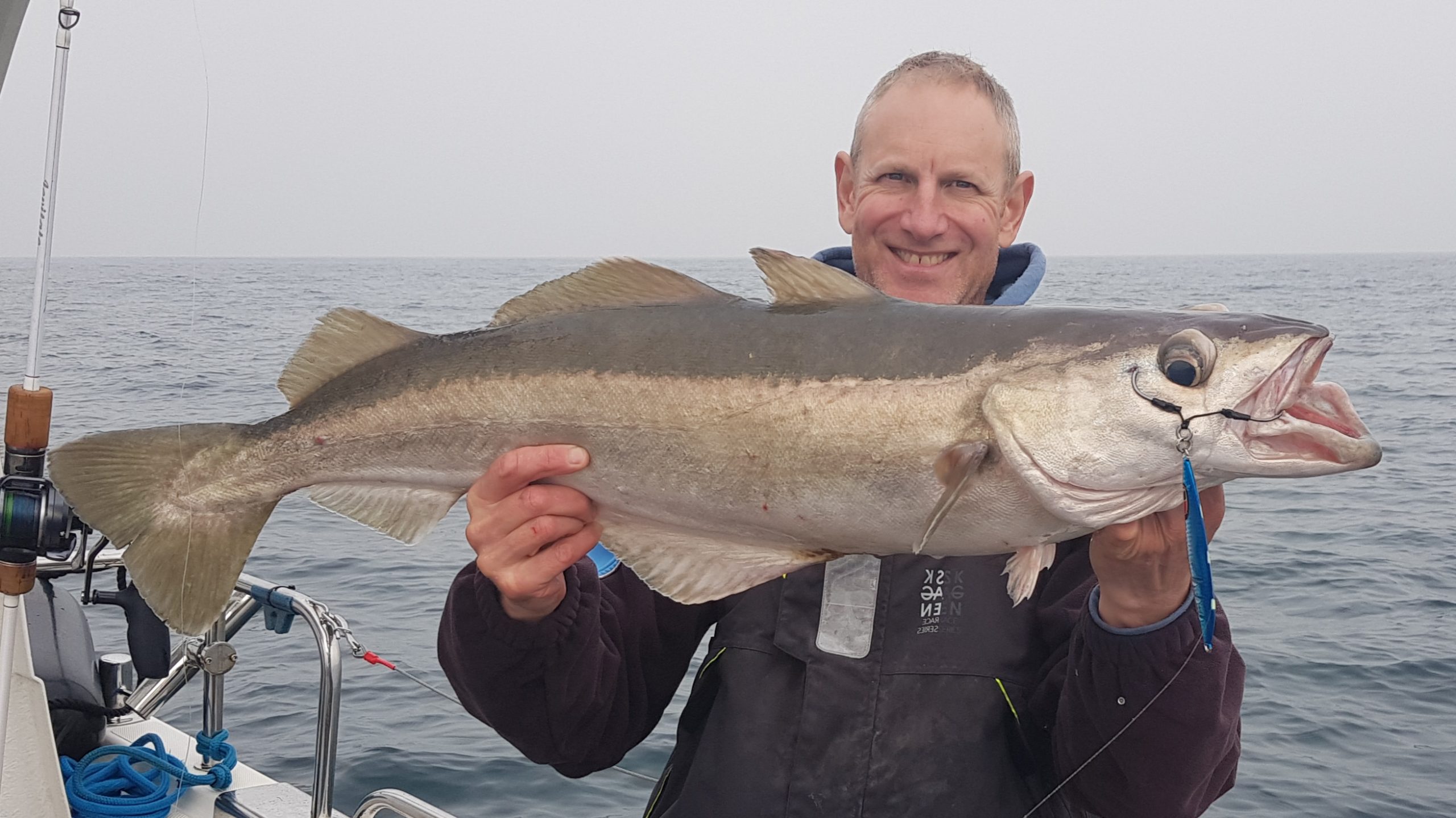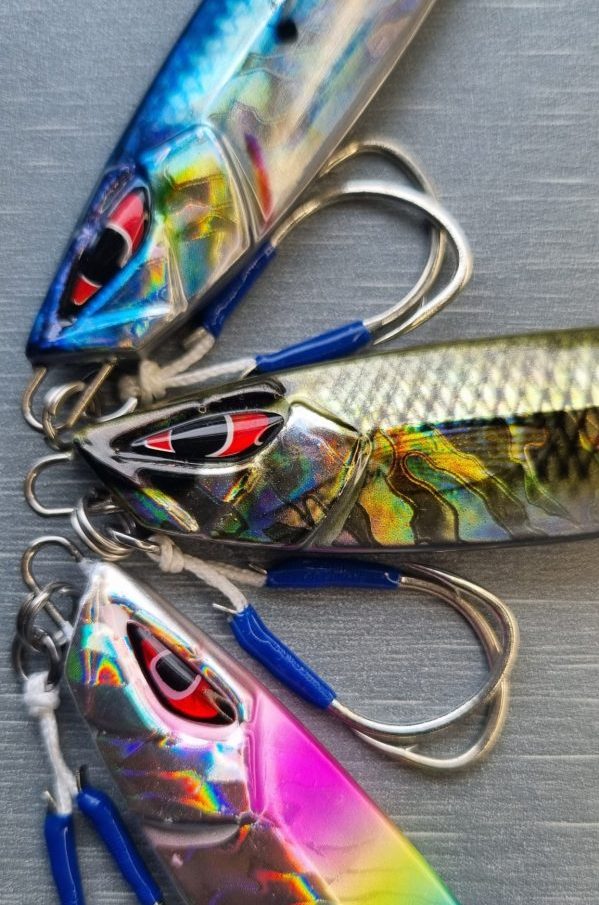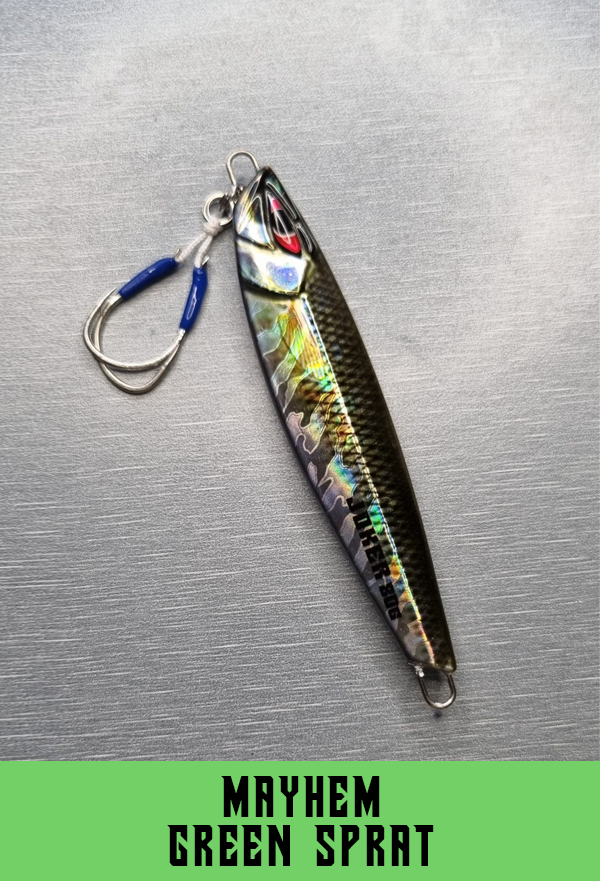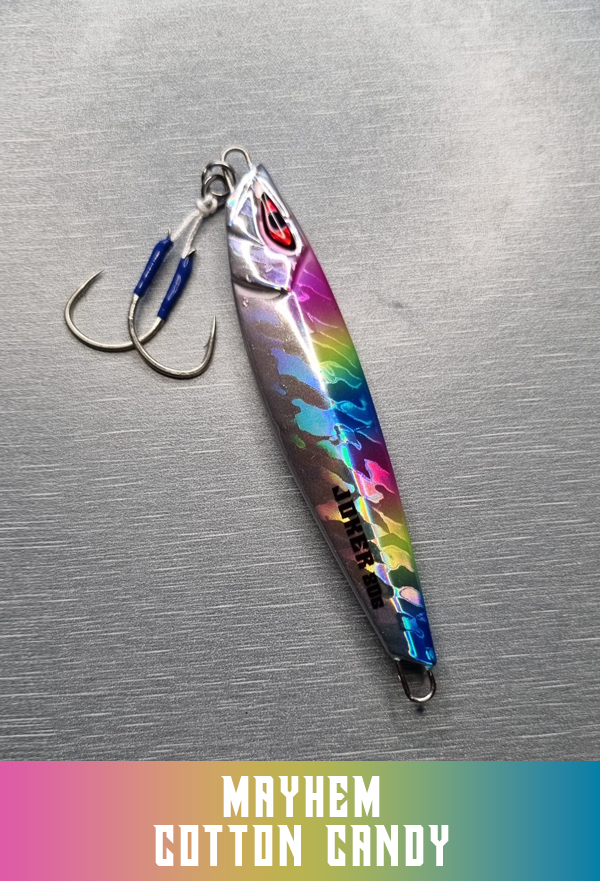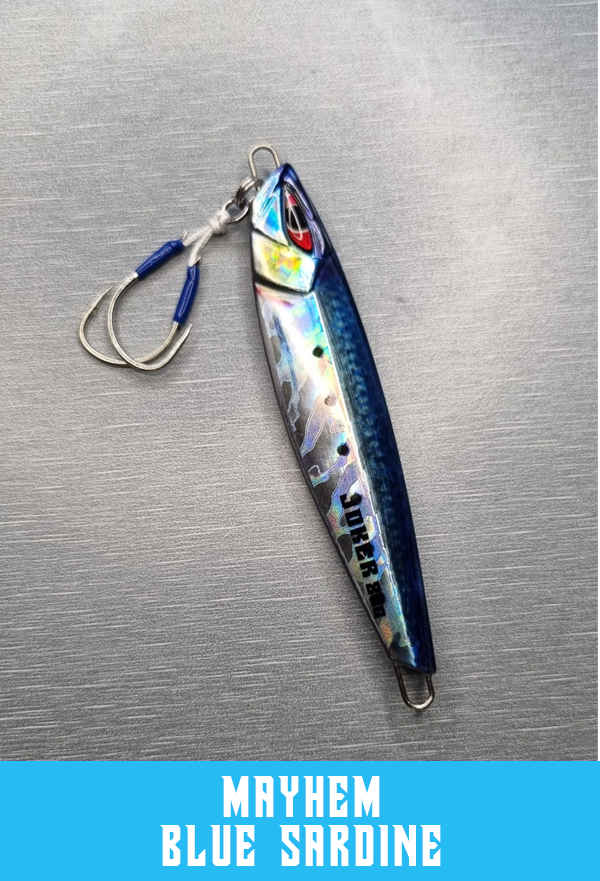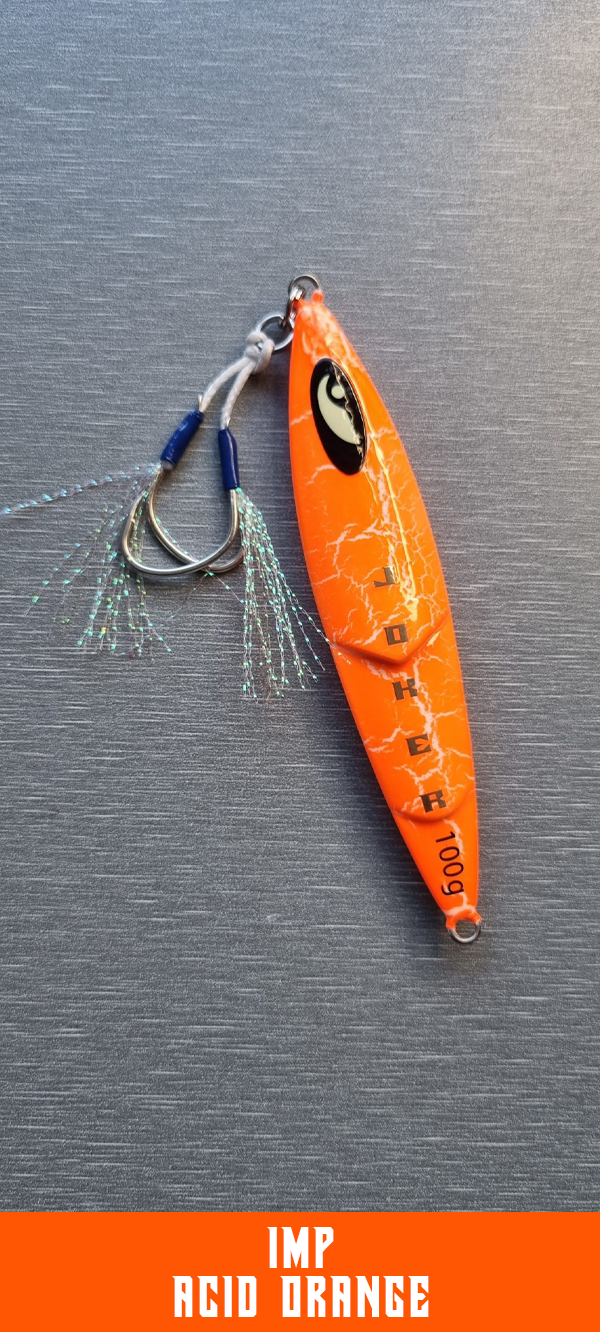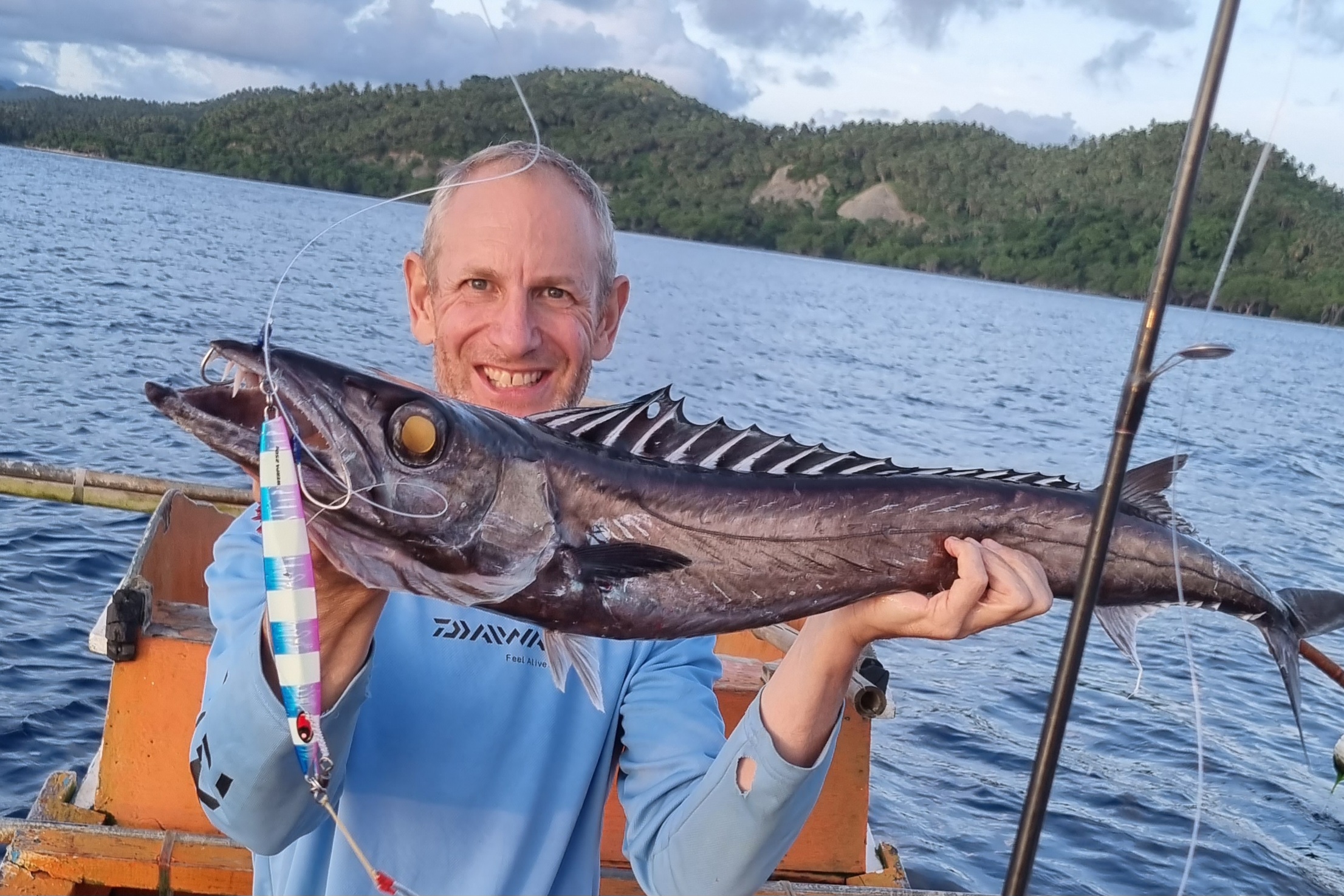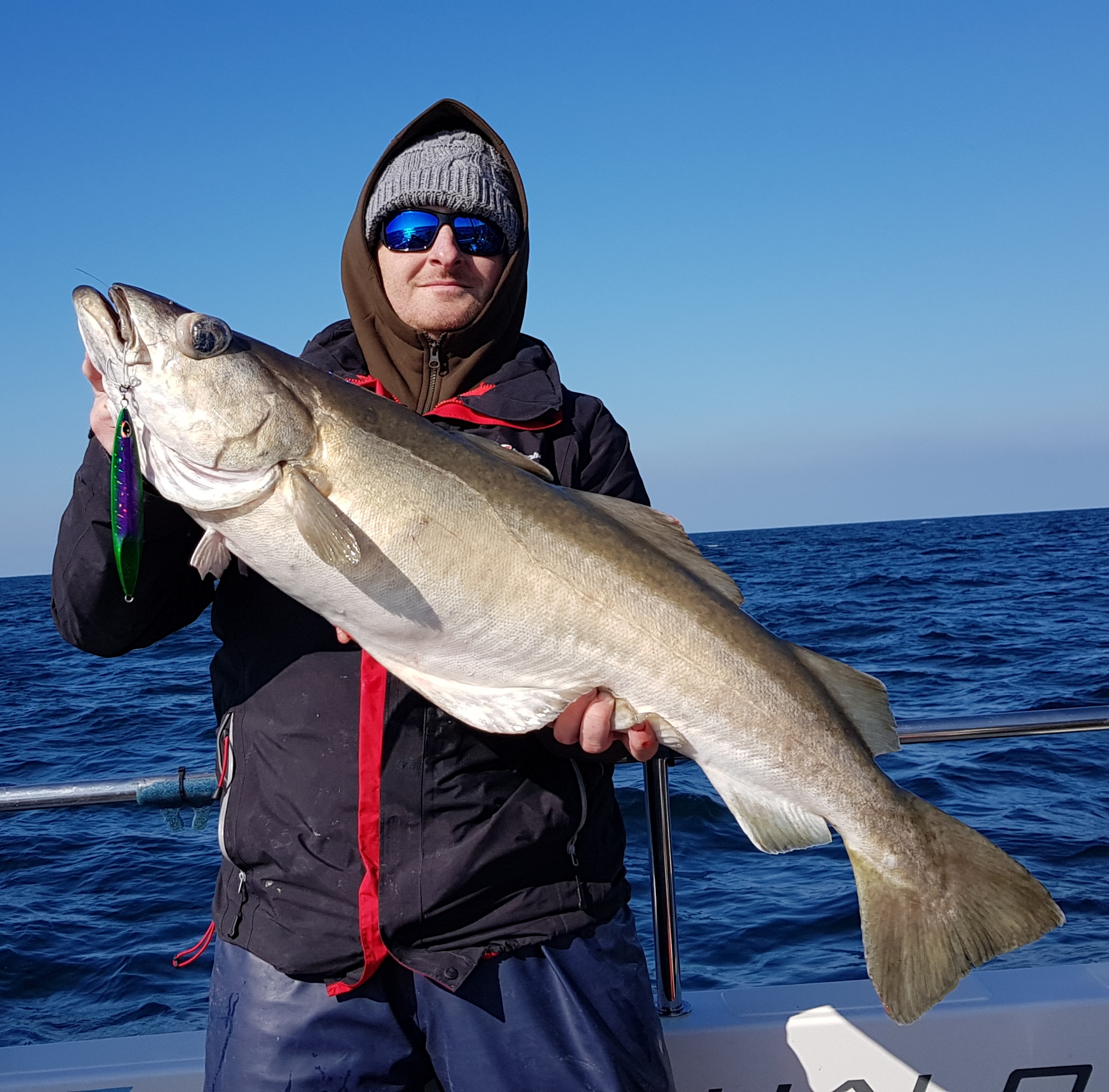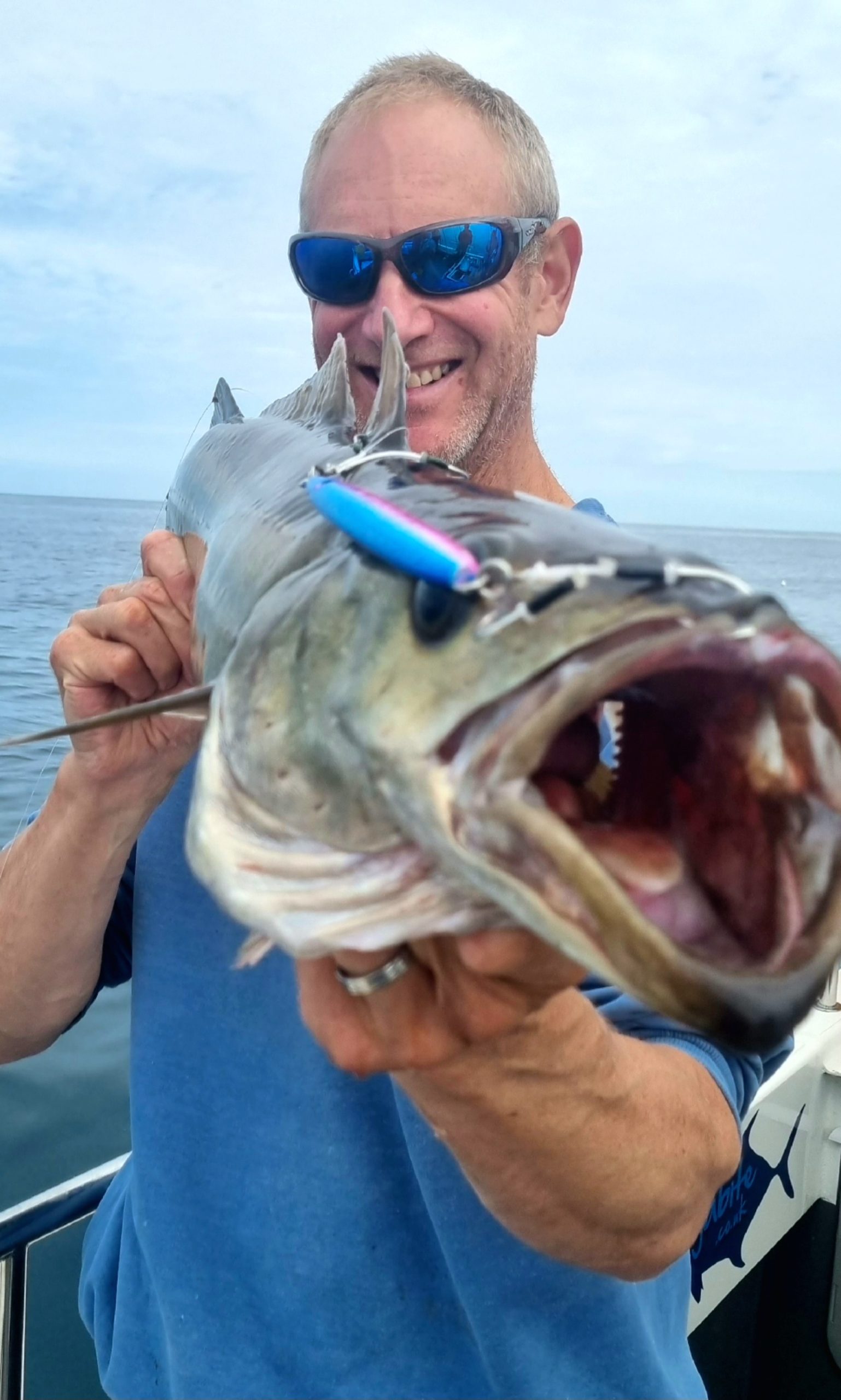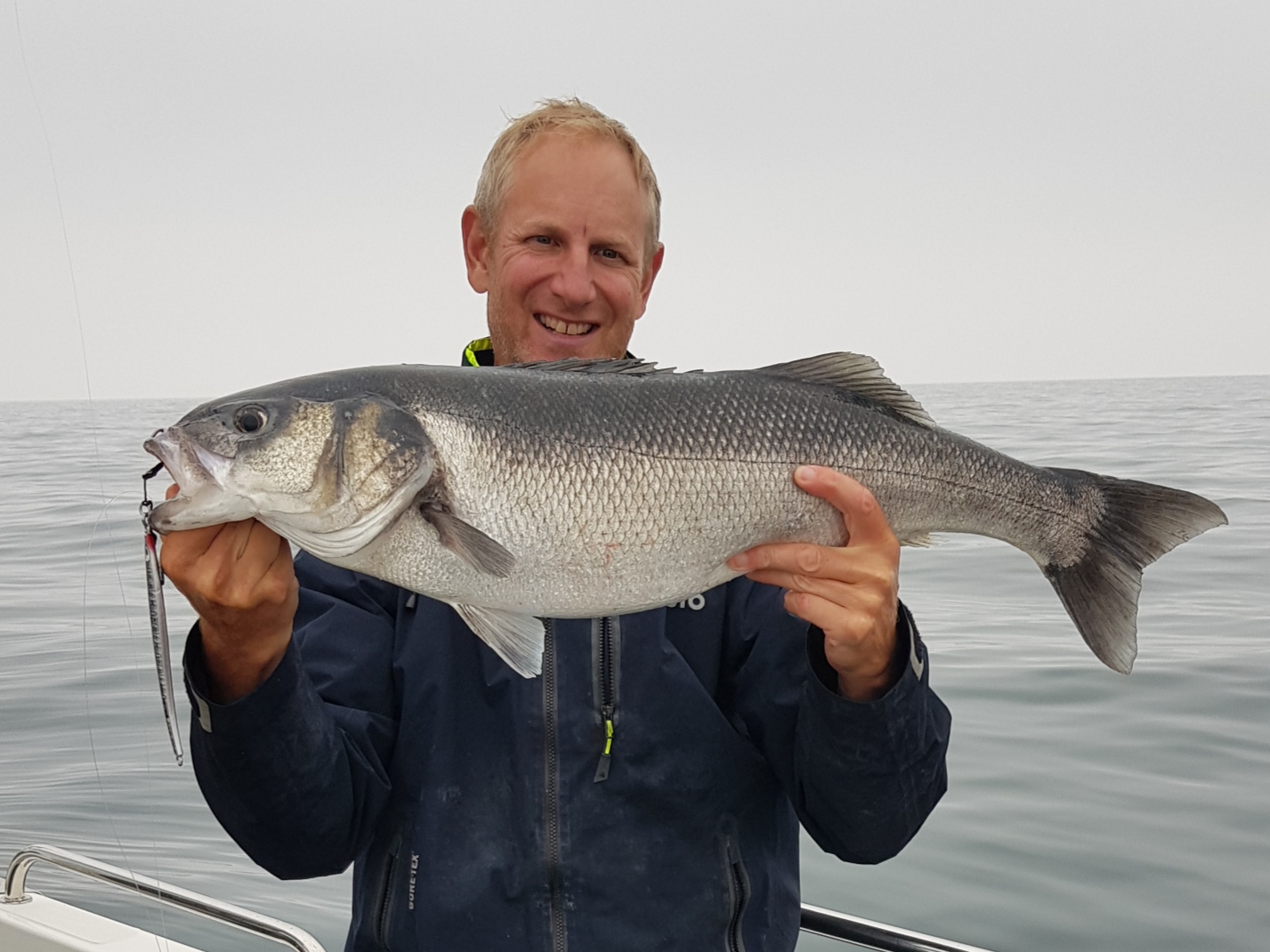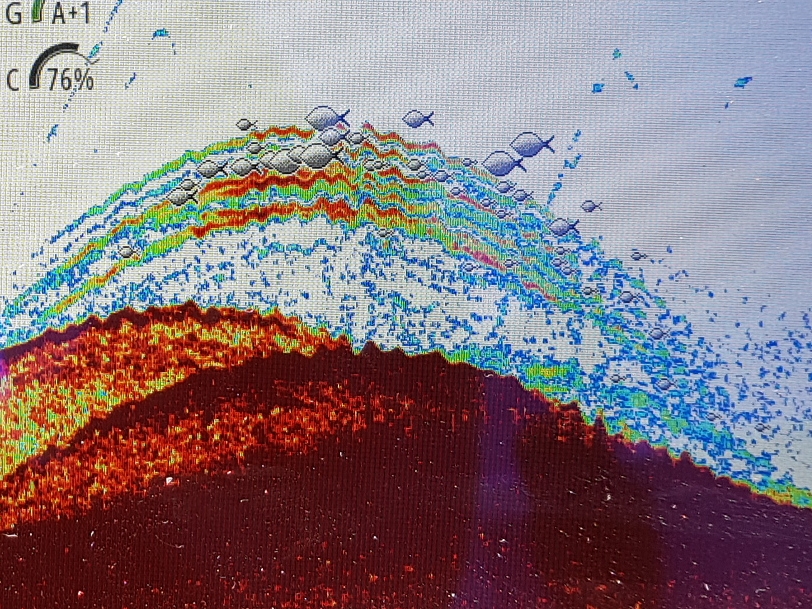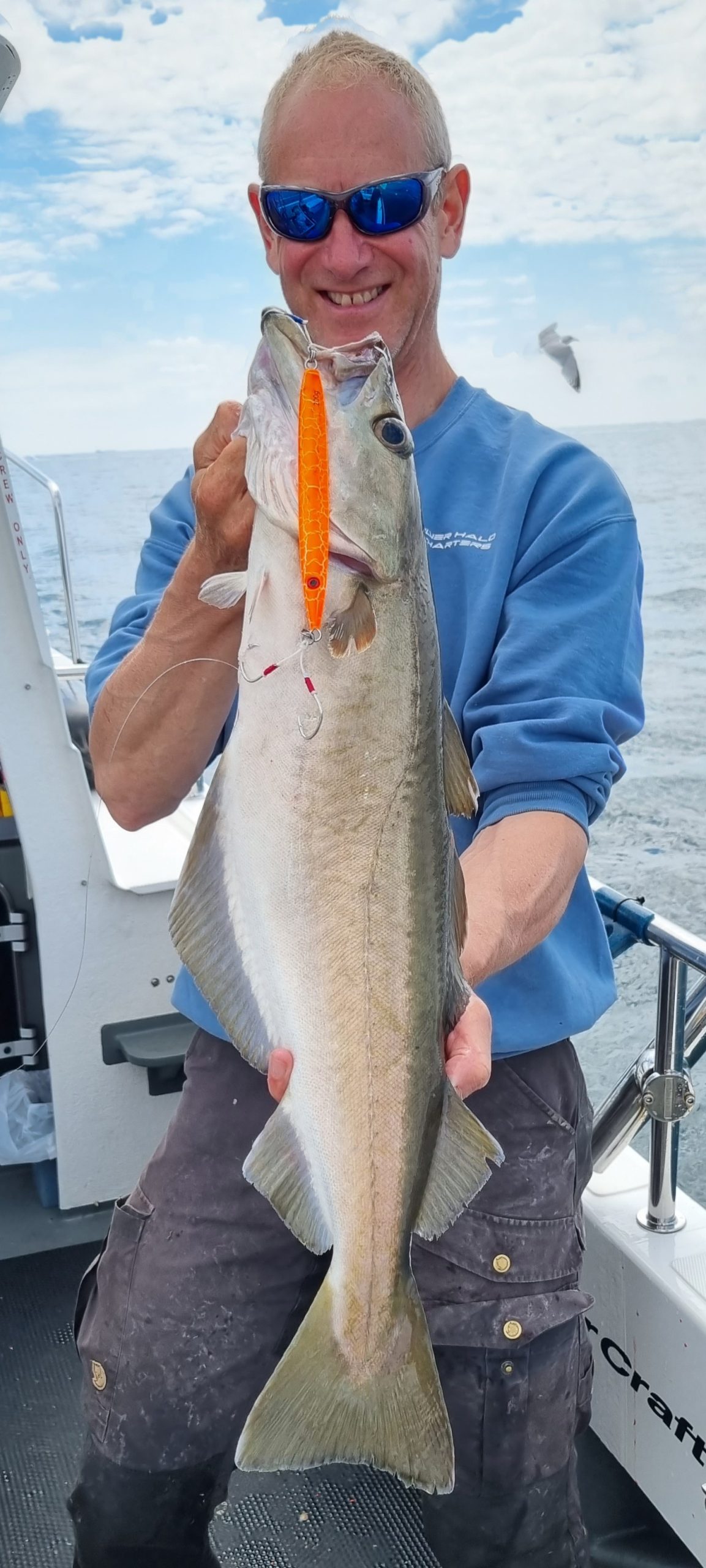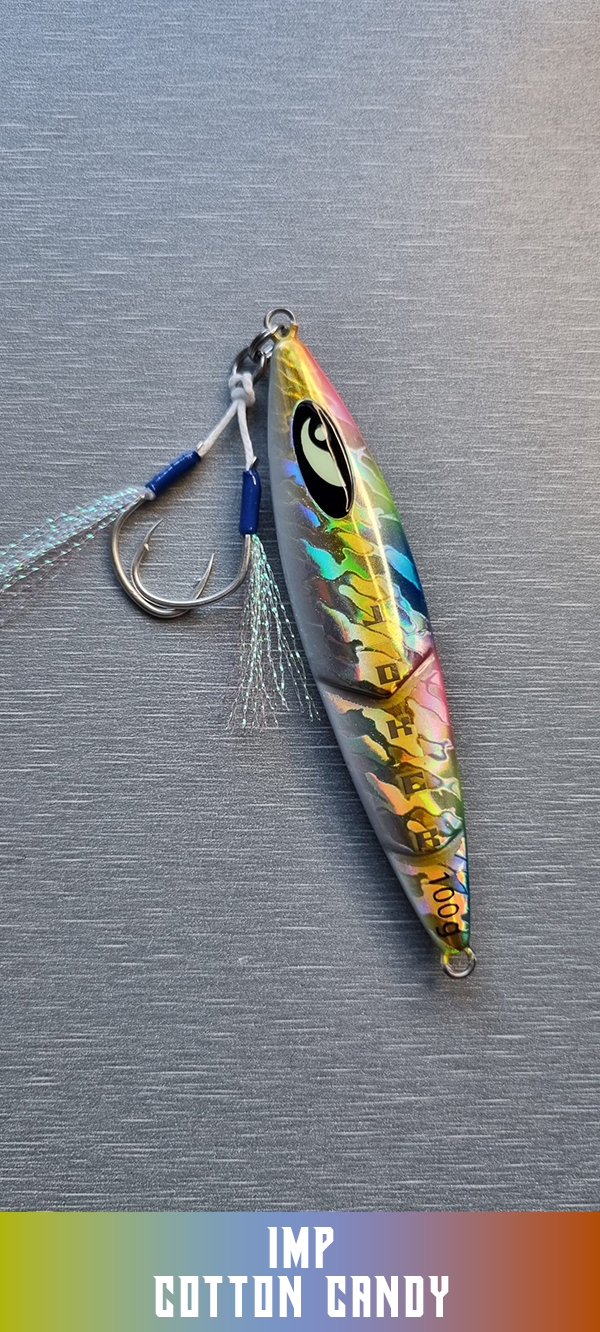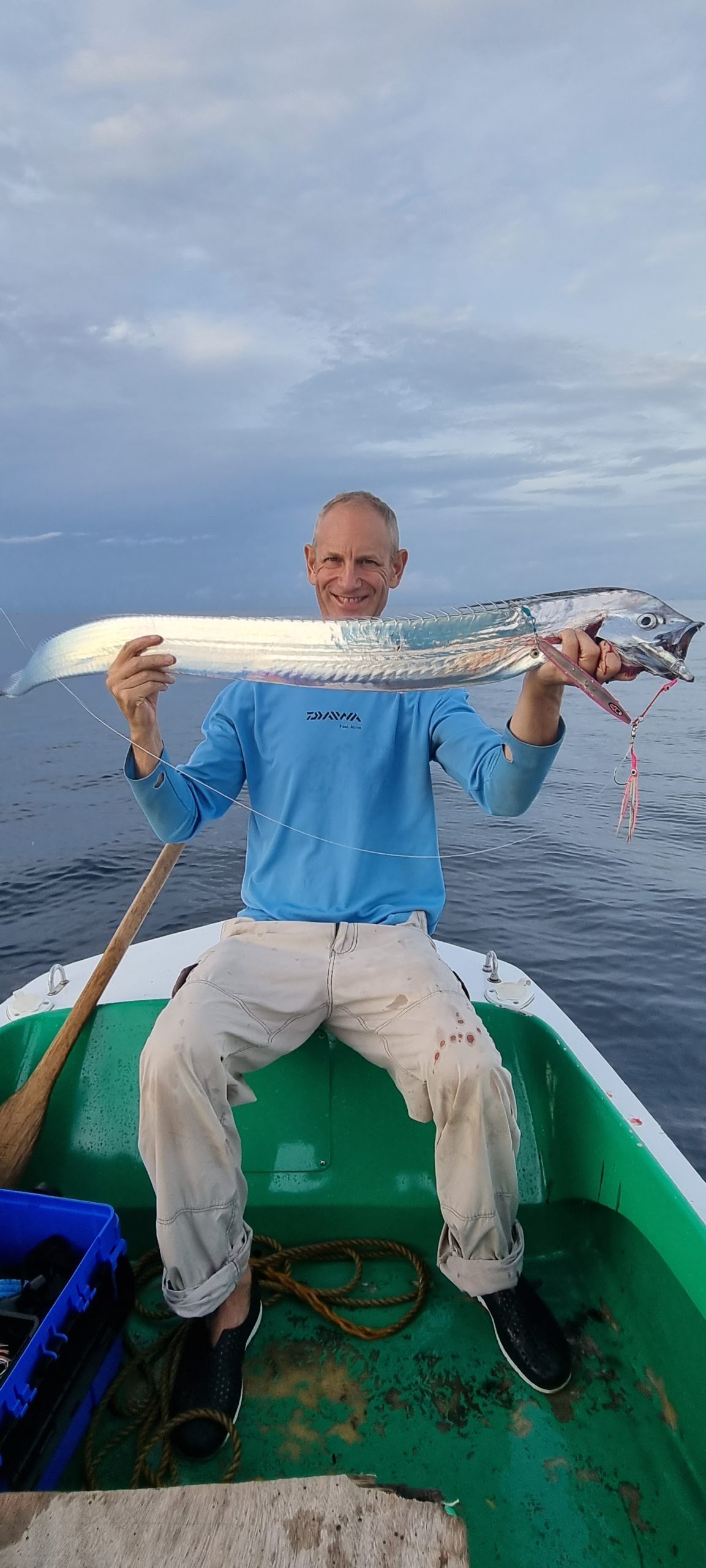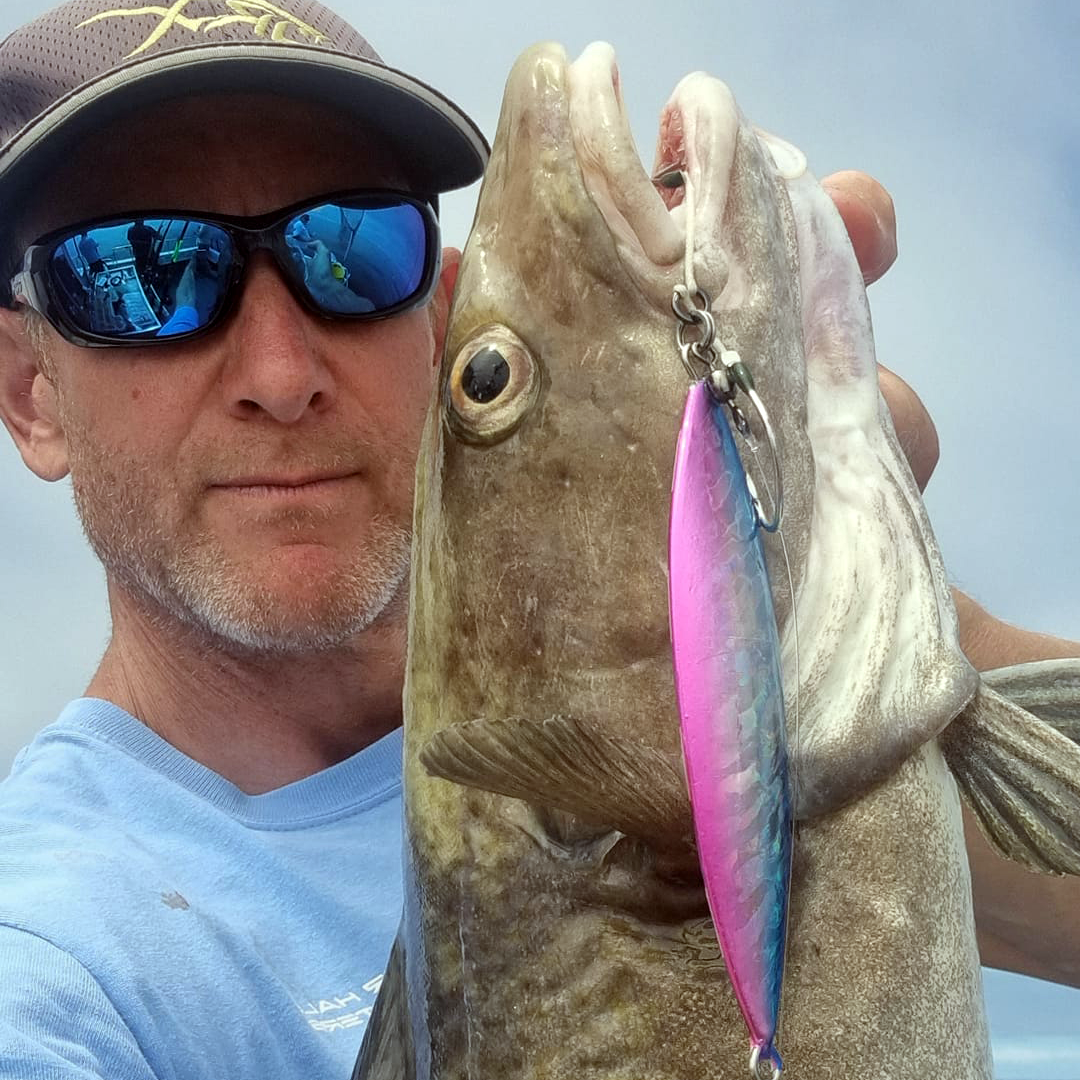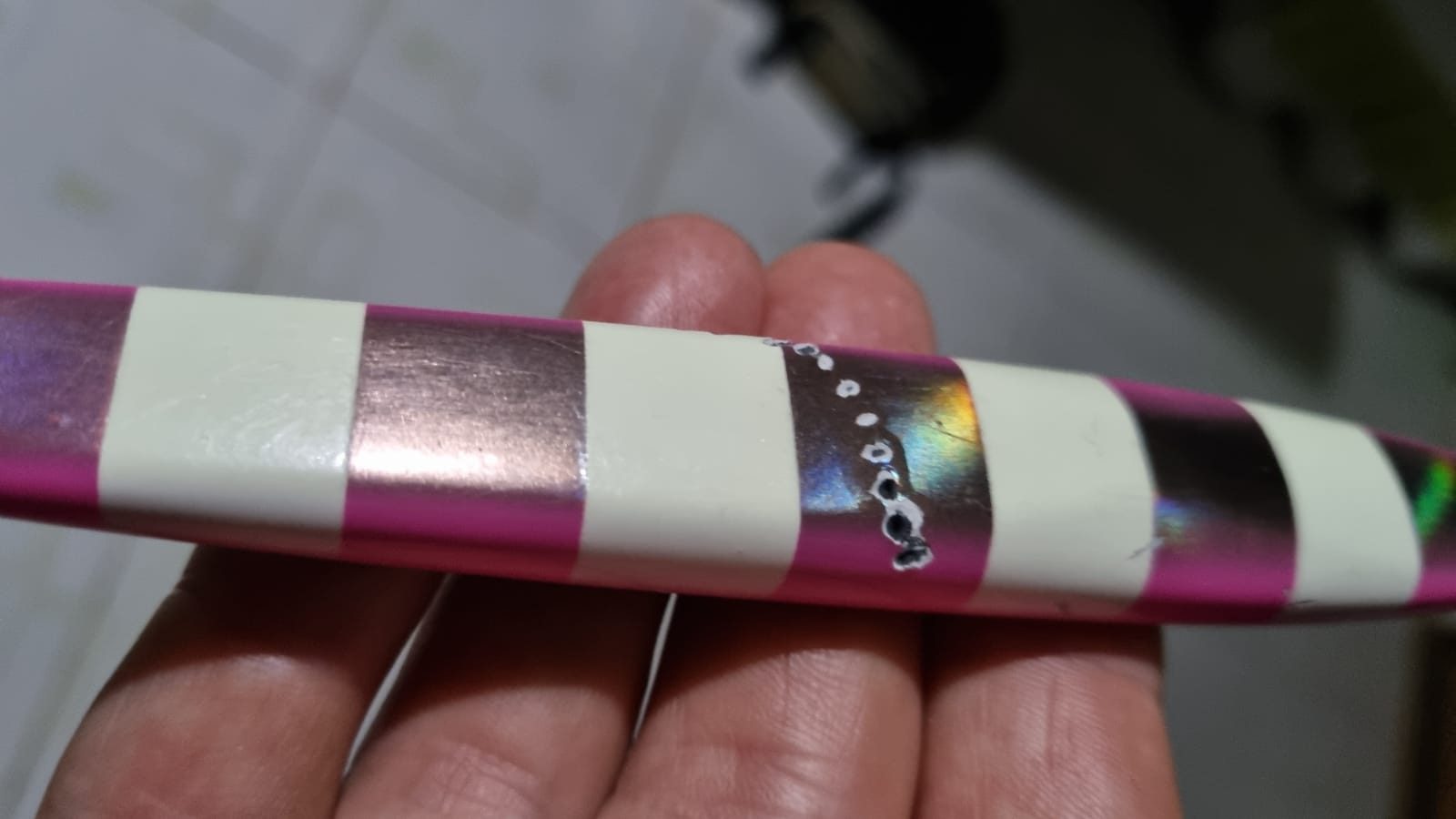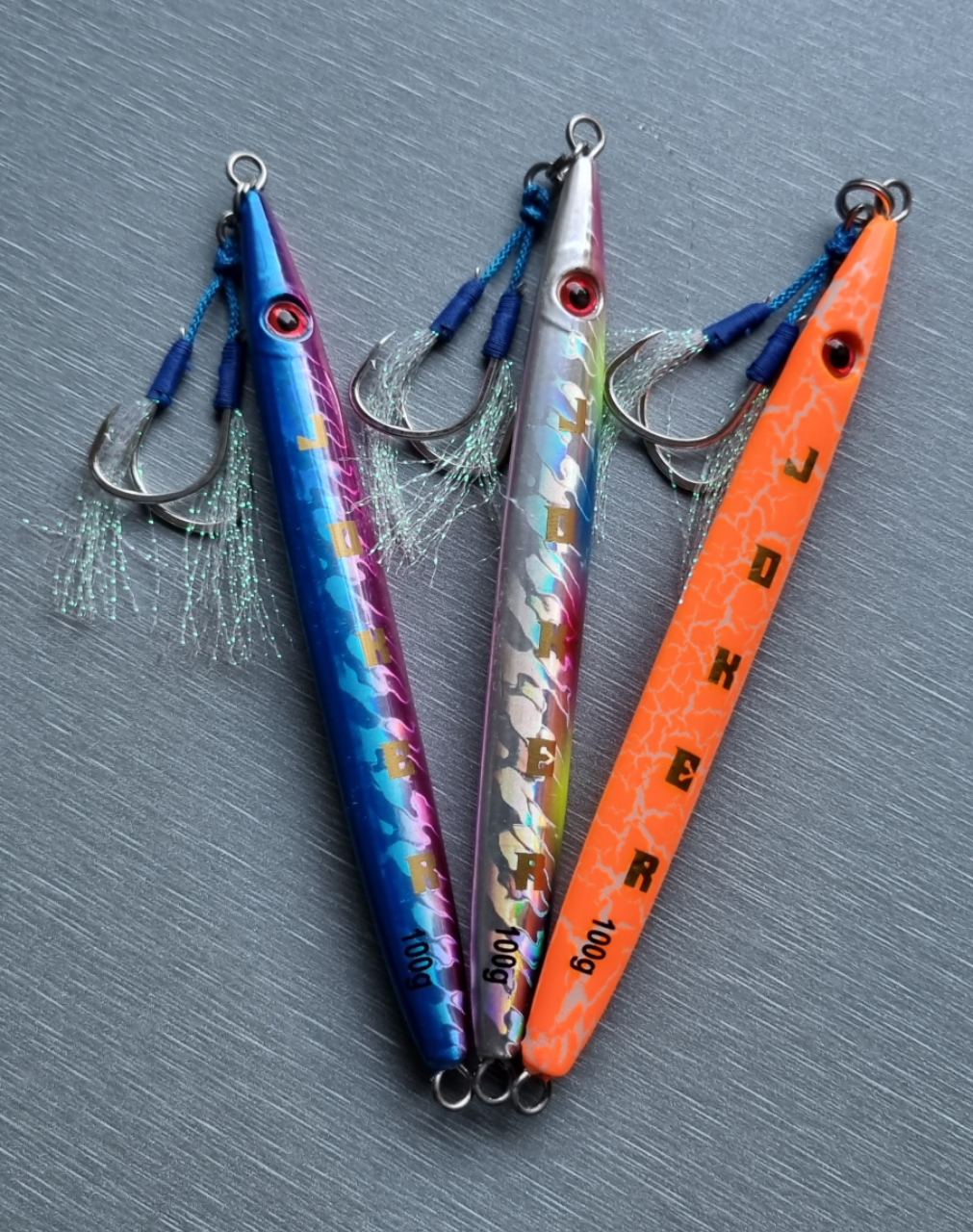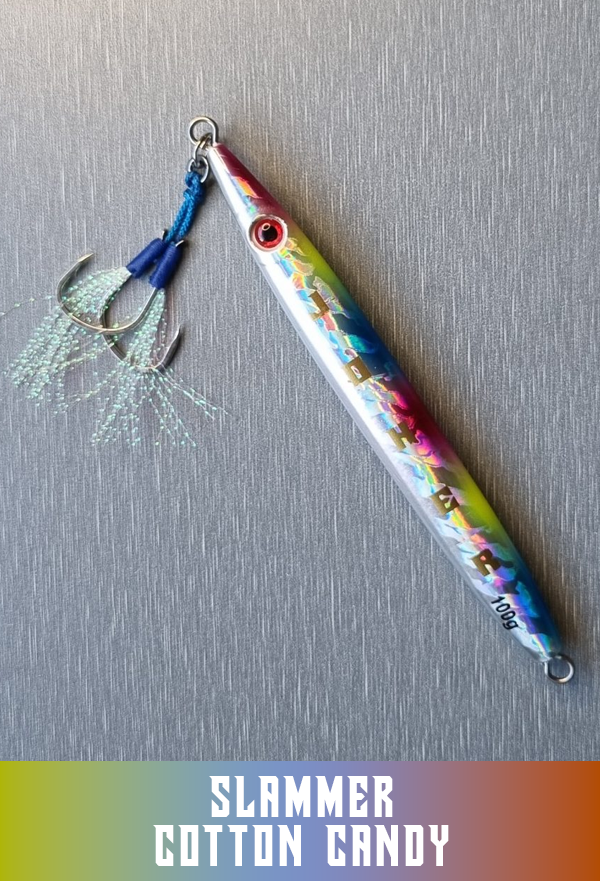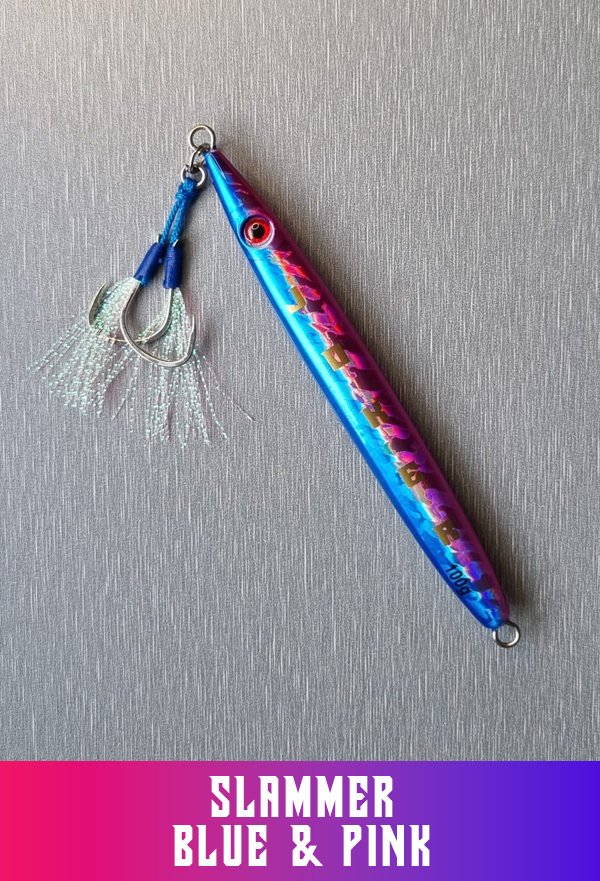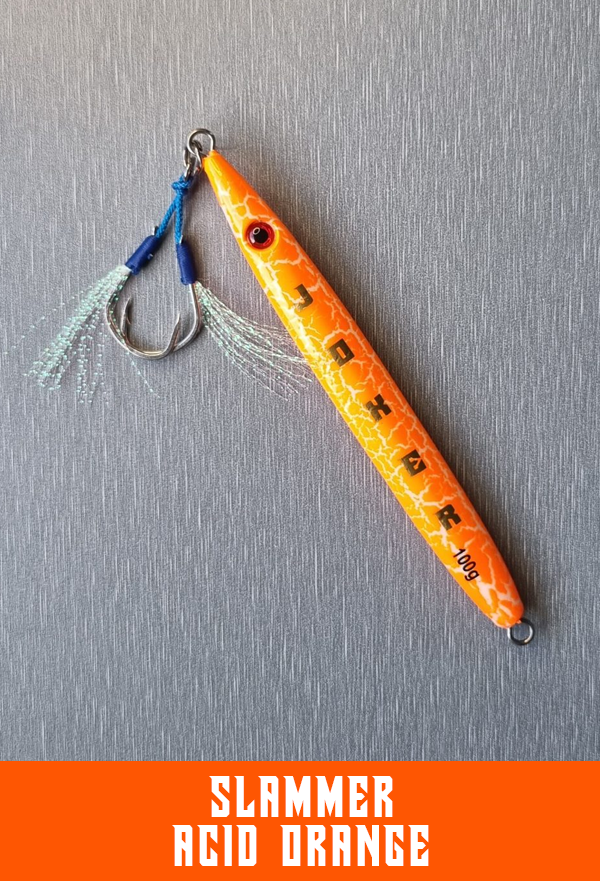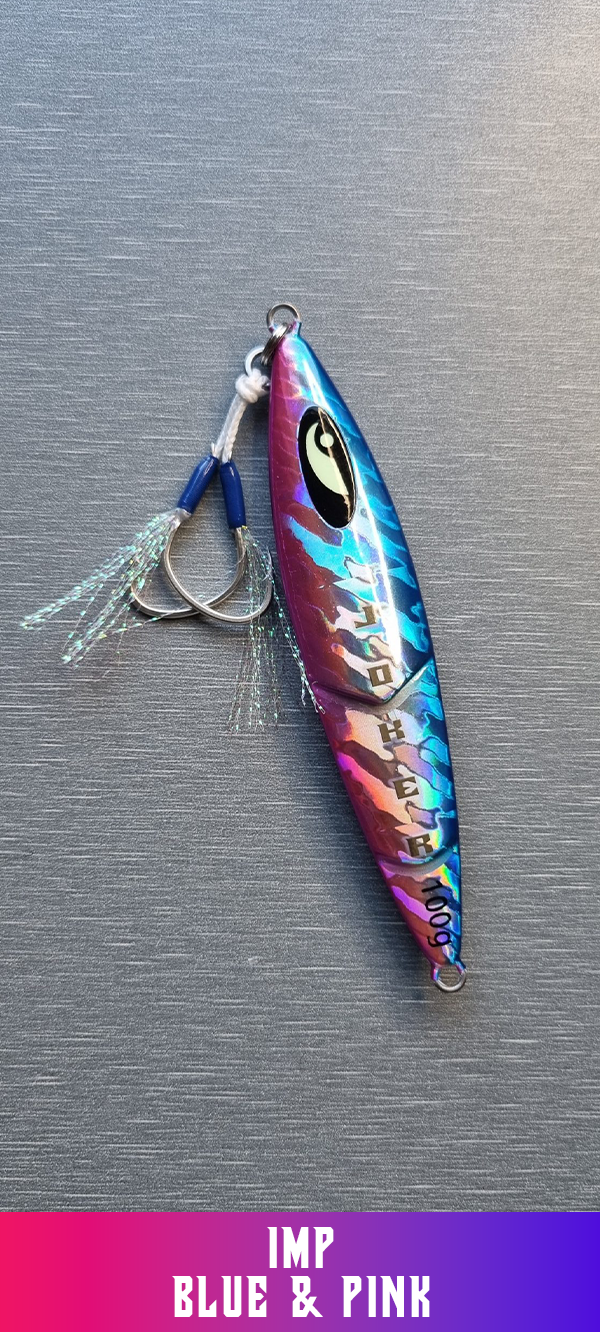Slow Pitch Jigging
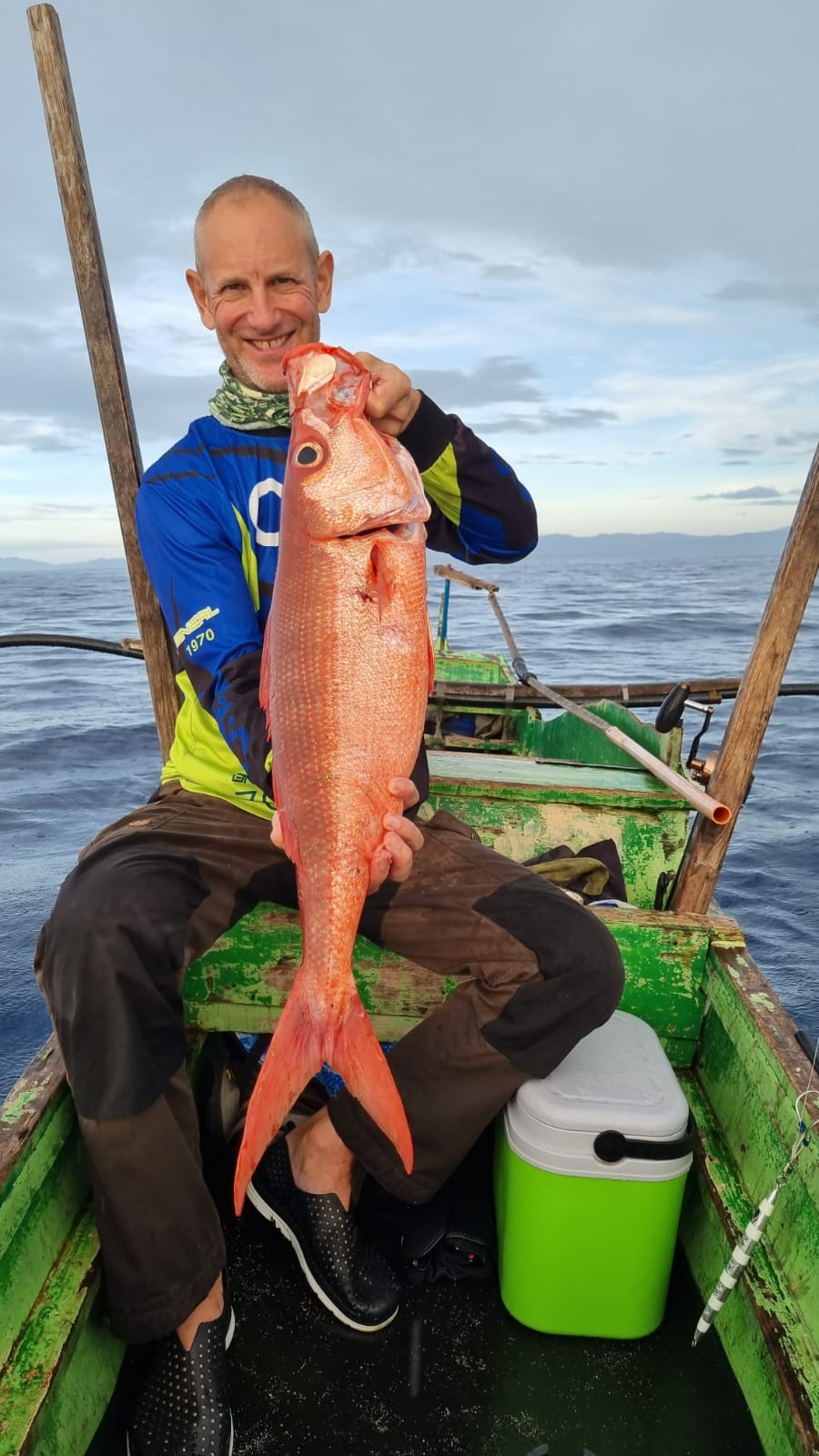
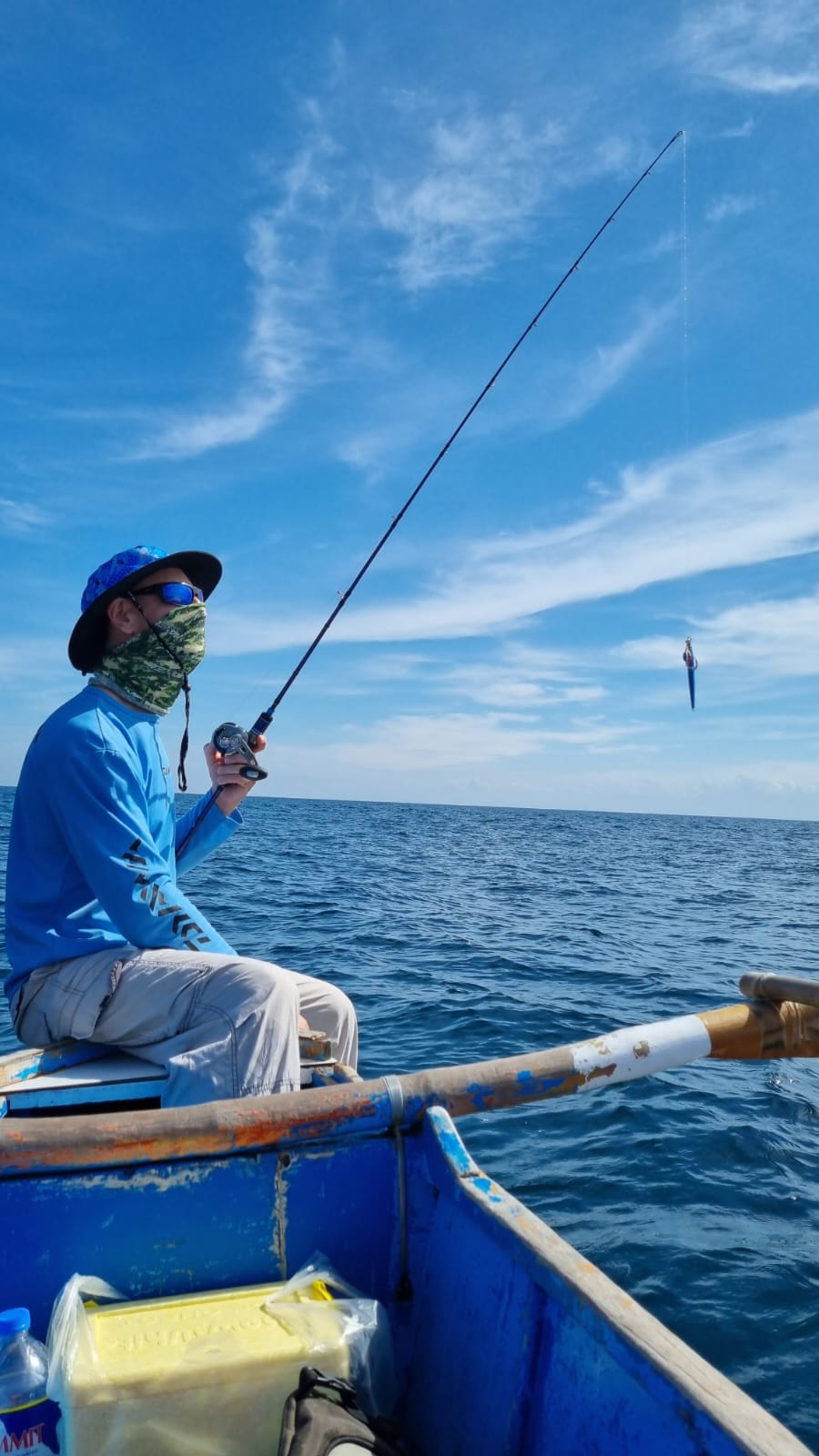
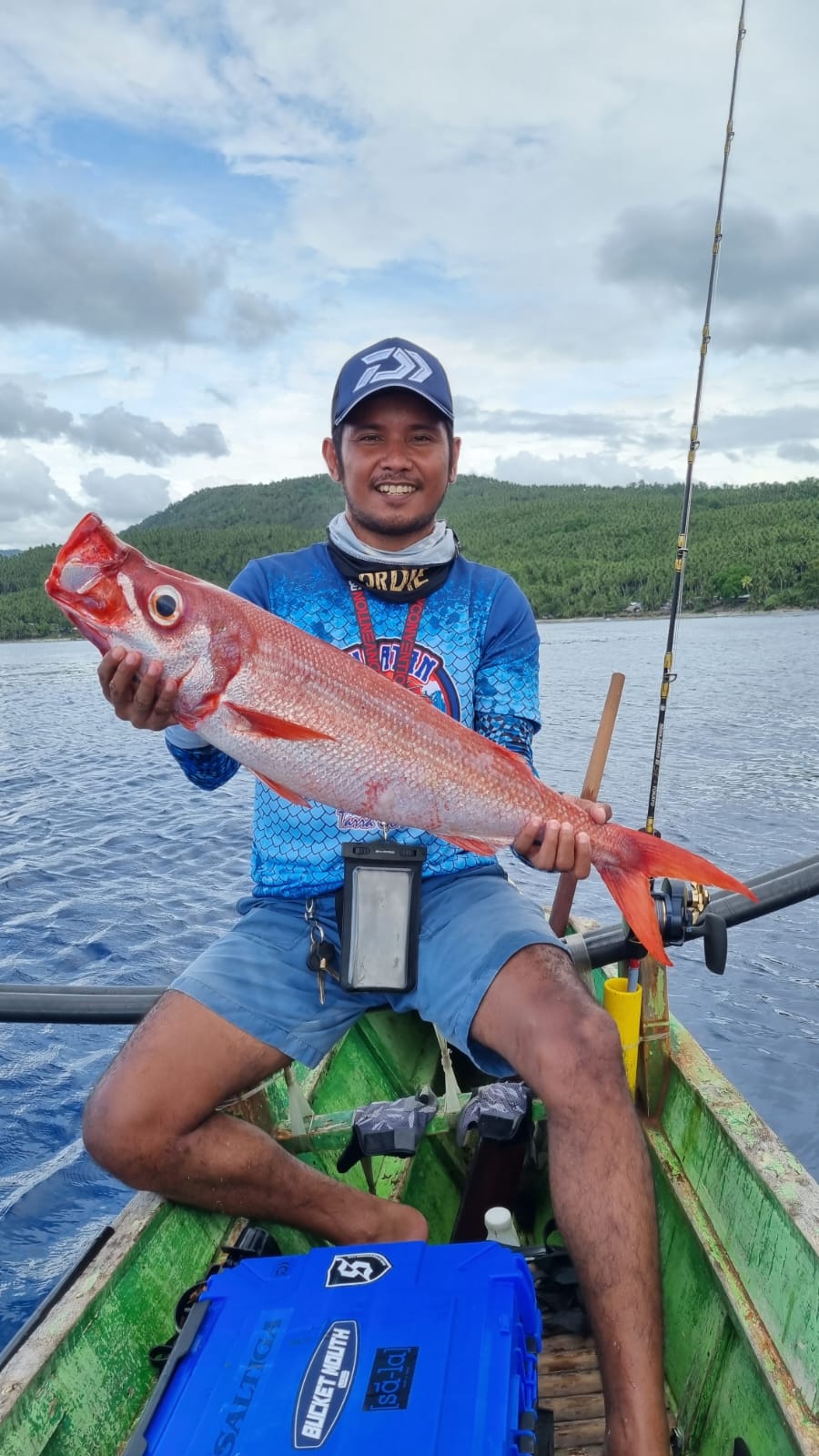
Slow Pitch Jigging Trips.
Slow Pitch Jigging and lure fishing is available on all HALF and FULL DAY, fishing charters.
My favourite fishing method is slow pitch jigging and it’s a method I’ve been using to great success in local waters since 2014, both my personal best bass (12lb) and pollock (17lb), fell to my slow jigs.
One of the beauties of angling and in-particular Slow Picth Jigging are that they’re sports that you never stop learning with. It can take many trips to start to get the feel and connection with SPJ, it’s great fun but it’s also a sum of so many parts, so it’s highly valuable to learn them quickly. The finer stuff obviously takes a bit more time and happens through continued experiences. Having other Slow Pitch Jigging anglers onboard and a knowledgeable, helpful and compassionate skipper are all important to gaining any knowledge quickly. It’s not the only way we fish but it’s certainly one of the favourites.
I recently fished a fair bit of Slow Picth Jigging during my 2022 travels around the Philippines. Whilst there and settled in suitable areas, I would reach out to local Slow Pitch Jigging anglers who were more than happy to help, not only providing contacts for boatmen but were keen to fish alongside me, helping me adjust my own skill sets to suit their much deeper waters and more varied species. There I fished inshore waters upto depths of 360 metres, however, most fishing took place in around 150 to 250m and with jigs from 150g to 300g, still a real learning experience and much that can be translated back to our local fishing.
Back here in the South West of the UK, we only really fish in depths to around 75m so its a lot easier physically, although strong tides and wind can make things challenging at times so we certainly don’t get things all our own way!
On my charters we fish with both with lures and Slow Pitch Jigging and when the conditions are right, I will always encourage the use of SPJ. I’ve several good set ups available for clients to use and I’ve recently become a Pro Staffer at Palmarius. Palmarius are small but high quality fishing tackle company in the U.S.A and I’m delighted to have and use their jigging and lure rods onboard Silver Halo. Those rods are certainly my pic of the bunch but I also have a selection of dedicated SPJ rods from Temple Reef, Maxel, Palms and Major Craft, braid is usually between 20lb to 30lb and jigs range mostly from 100g to 200g. Everything you need is right here and I will do my best to get you fishing correctly.
As always, I’m happy to take small groups or individuals. You can either book a private charter specifically for SPJ or just simply join a normal wreck fishing charter where there maybe other SPJ or lure anglers alongside you. We often fish lures and SPJ together on the same trips.
Please read on for an in depth look at SPJ.
Some Slow Pitch Jigging science and ‘on the deck’ Pro Tips!
1. Firstly, your slow pitch jig is designed to mimmick an injured, dying or fleeing bait fish.
Unlike a lure that swims in a steady and straightish line, your jig movement can be much more erratic and can attract fish that are less focused on feeding as well as the harder feeding fish. Jigs will mostly get hit by fish when on the drop and whilst stationary, basically before or after a lifting pitch with the rod or during or after a longer fall.
Keeping the line vertical is really key with SPJ (and I will keep mentioning that here!!) as this allows not only the best pitch action of the jig, but also the best fall. You should be aware that part of pitching the rod is actually setting the jig up ready to fall again correctly.
2. The huge importance of braid and how it can effect your Slow Pitch Jigging.
When fishing at depths, the water rubs against the surface of the braid along it’s length, from the sea surface all the way down to the short leader connected to your jig. This contact with the water and in-turn the pressure of the tidal stream, causes drag that can slow the fall of the jig, it can also hold the top of the jig high, push the jig away from the boat and generally mess with it’s free falling fishing action……and these are all bad!
For good SPJ the jig needs to fall freely and ideally it should be unrestricted in this. Part of acheiving this is by keeping the line from your rod tip down to the jig as close to vertical as possible.
When we’re pitching the rod up we want the jig to respond and flick upwards through the water, when it slows it wants to achieve that ‘unweighted’ position usually lying on it’s side, this hanging and relaxed position can then provide the best fishing action on the free fall. If the drag loading is too high it can in-effect pull the braid and tilt the jig away from the best position and then ruin it’s unrestricted free fall.
A dedicated Slow Pitch Jigging braid really helps improve this situation as it should be smooth and super fine, it’ll then cut through the water more effectively, reducing the drag along its length and in turn helping the line stay vertical longer and the jig fall more freely. You should also avoid using heavier braids with lighter jigs as this only magnifies the problem. These braids are also colour coded for depth marking. This allows you to fully understand the location of you jig in the water column and helps you to avoid snagging on structure.
Most predatory fish gather and feed around structure so the vast majority of our time is spent drifting into and across structures that are hopefully holding fish. When initially dropping the jig in from the boat to the seabed ahead of the structure, count the colour markings and make a mental note of the colour once you hit the bottom. Then as you fish, use your marker braid to gauge where you are in relation to the bottom and the higher structures. Check the depths on the sonar or ask your skipper for them, you can then translate it back to your braid and jig position. This may take a drift or two to get dialled in, but it can help you set the jig up for where the fish are and also avoid you getting snagged.
Once you’ve got a handle on this, when you drop in all the way from the surface I recommend stopping 5 to 10m off the botttom and give a fast 3 or 4 turns on the reel handle to pull any arcing out of the braid. After that, drop the rest of the way (unless on a snaggy wreck then stop slightly above it) and commence fishing proper. You may even get a take whilst you pause and tighten up so it’s worth a few cheeky pitches here.
Then whilst jigging, after pitching the rod up, as the jig ‘hangs’ and then starts to fall again, watch your braid on the water’s surface, just below your rod tip. Try and avoid slowing the falling jig with your rod. If you slow the jig down, your in-effect loading the top of it again, (in a similar way to the waters drag on the braid) and it will not slide or flutter correctly, it will just drop back and forth and look really boring to any fish! Always lower the rod slightly faster than the jig takes the line back, but be aware, avoid allowing the braid to blow back on to the top of your rod! Tip wraps are unwanted and can be costly! Using a spiral wrapped rod can help eliminate snagging the braid on a rod eye but it’s still best to move your rod slightly to the side of the braid as it falls back onto the water. When you get more used to jigging you can time the rod lowering just a tiny fraction faster than the falling jig, you’ll stay closer to connection and have less chance of rod tangles.
When your jig can fall freely as explained, you’ll get the best action and in turn get connected to more fish! Remember that during this jigging and falling motion that slack line bites are common, always stay focused on the braid and it’s movement, watch for it staying slack too long or if it goes tight more quickly, it could be a hit so wind in fast to connect with the fish.
It actually really helps to have one or two lure anglers or other jiggers fishing beside you, find out if they’re getting any takes and at what depth, share your findings and if you can, work together! Also look and see if there are any signs on the sonar higher up in the water. Get dialled in to using the marker braid every drift, once you know the height of the wreck in comparision to the sea bed you can then go on to work out where to avoid and where to spend more time jigging in the fish holding areas.
It’s worth noting that all your depth readings are more accurate when your line is vertical, if you’ve streamed away say 15m to the starboard side and your line is on an angle, it’s much harder to monitor the depth correctly, not only that, the sonar image is showing the area under the boat not where your jig is!
So not touching your jig on the wreck all day long is unavoidable, but if you can learn to gauge where you are and stop it a metre or two high you’ll spend less time losing jigs and resetting your gear. When your getting more confident and avoiding these contacts with the structure you can then also reduce the length of your leader to about 4 or 5 foot, but remember, wrecks and super fine braids just dont mix well!
3. The dedicated Slow Pitch Jigging rod.
There are many variations but it’s basically a lightweight rod around 6 foot long that’s main object in life is to provide the correct pitch and flick of the jig. It’s this correct action onto the jig that then helps set it up for the most effective free fall. Your choice of rod rating or power will be made on the depth and type of water you’re fishing and the weight of the jigs required to get down there.
The various rod powers or ratings and the way each of them imparts it’s power and in turn ‘action’, to your various jigs is important to understand. Look at the ratings on both the jig and the rod and test your jigs to see how the rod works them close to the boat (at about 3 to 4m below the surface). Just about every rod and jig has a different action and jigs need to be worked accordingly. Remember, this action beside the boat will always be reduced at greater depth, it will become slightly slower and less aggresive, again this is due to the braid drag and any arcing with the tide etc. The addition of these slight loads obviously increase with more depth and current, they reduce some of the rods power, in-effect making it slower and a bit harder to work.
In the UK we are looking at using jigs from about 60g to 120g right inshore and then from 100g to 250g offshore. Conditions and tide will determine what you go for on the day but your choice of set up and rod need to start in the middle of these ranges. If you use a lighter rod, actions will be slowed, some jigs prefer this. If you use a heavier more powerful rod the actions will be faster but you will also get better useage when conditions are more challenging. Its always good to have options but I’d recommended to start in the middle or slightly higher than the middle of the range above.
4. The SPJ reel.
The reel is the tiny power house used to hold and retrieve line whilst jigging and for bringing your fish up to the boat, but there is also a bit more to it. A good quality small, well balanced, over head reel is best and ideally with a good rate of retrieve. A strong and smooth drag is certainly important but it really needs a nice powerful retrieve. This is important because the rod is just too light and cannot be used to pump and lift the fish up, remember to just keep the rod low and use the reel smoothly like a winch. Having a 100% full spool also helps increase the retrieve rate and allows for better working of the jig up through the water column, just 1 turn can grab close to 1m of line then.
Whilst jigging, remember to fish with one hand cupping the rod and reel and one hand ALWAYS on the reel handle. Although we do strike, it’s not enough on it’s own as the rod is so soft and short, it’s the winding super fast into a fish that tightens everything up and initially helps set the hooks. It’s also worth noting that there’s often very little pressure between the fish and the hooks at the time of the take, this is because the fish is hitting the jig as it falls or ‘hangs’. Yes, it may hook it’s self, but time is of the essence, keep your hand on the handle, get winding and lift your rod firmly and make sure!
5. Jigs.
Jig selection is not just about finding what could be visually pleasing in the tackle box. Various weight and shape jigs fish and move differently through the water. Some create better actions but can also be prone to streaming away more, especially when tide or wind come into play.
Don’t waste your hard earnt money on a great rod and reel just to use unsuitable braid and jig that streams off into the distance. Maybe that particular style jig is ok on a calm day at slack water, but theres often some wind to move the boat away from that perfect drift! Also remember that there’s some epic fishing to be had when the tide is strong and fish are holding the bottom!
I’ve been finding some slimmer jigs that look more like traditional ‘speed’ jigs fish really well ‘slowly’ and with the ‘long fall’ technique. These slimmer jigs are still slightly unsymmetrical but punch and dart well, they also have a benefit as they can often can get down through the water column quicker, catch less drag not only with the tidal stream but whilst actually jigging, it’s some of these key factors that are all helpful in staying vertical for longer.
It’s worth spending some time having a look at my new partner business JOKER Jigs and Lures HERE.
Here you will find some top quality jigs and lures that are suitable for our waters. All the JOKER products are carefully selected, tested and proven onboard Silver Halo. The ones that do make the grade are then further refined and customized ready for sale, they come proffessionally packed and with helpful tips
6. Timing.
The timing of your ‘pitching’, ‘falling’ and ‘drop in’ are also important. We need to know where the fish are and the more time with your jig spent in the ‘strike zone’ with your line vertical means more fish to the boat. The sonar screen and knowledgeable skipper can be helping with this.
When we locate where those hot spots of fish are, my drifts will obviously concetrate more to that area and will be timed to allow for those jigs to drop in just ahead of them.
If you’re fishing in challenging conditions when the boat is being held or pushed by the wind and the tide is going away from you, consider using a more powerful, longer rod. Possibly use a heavier, slimmer, smoother profiled jig. However, sometimes it can be impossible to stay vertical for long so ideally the skipper needs to time the drift a bit tighter to the structure, allow for the angle of your line and position the boat accordingly. This scenario with boat position and larger angles is often more common with lure fishing as it’s being used on the more extreme days when the lines are streaming further and being vertical is not as important.
Another top tip is to rotate with other Slow Picth Jigging anglers across the stern, this is ideal on my small group charters. Simply take it in turns to throw the jig up-tide (normally the way I set up a drift it will be to the port side) so it then falls back toward the boat, you will gain precious vertical time as you fish the jig past the stern and off to the starboard side, moving across the deck as you do it. Once again, the ideal scenario is to make sure this is timed with the ‘strike zone’, you want your jig to arrive in the fish holding area in its best shape and most vertical! Once it looks like it’s streamed away, say about 10m away from vertical, get it back up, reposition and throw it uptide and repeat. When fishing in just 35m to 70m this doesnt take too long to acheive, however, when fishing in over 250m it’s a bit of a nightmare, but each day is different and it’s all part of the fun (or frustration).
Together, having a focused skipper, using team work, quality tackle and set up and understanding Slow Pitch Jigging are real game changers. When it all comes together you just can’t beat it!
7. Good Slow Pitch Jigging is the sum of many parts.
Basically, getting as many parts of your set up right is key. There’s a fine line between getting it bang on or fishing something that is not quite right and you’re just snagging jigs with no rewards, we’ve all been there!
When conditions become too challenging and lines just stream away too quickly, just revert to traditional lure fishing techniques. Lure fishing is still very popular and effective and I’ve got good setups of lure/gilling rods and reels available for use. I’ve also got weights, booms and lures all available for sale. It’s always good to have something in reserve and it’s also really good to see the comparison with lures and Slow Pitch Jigging side by side through the day!
Other Notes
So, my dedication and success with Slow Pitch Jigging over recent years, caught the attention of one of the UK’s biggest tackle company’s and in 2019 I was invited to be involved with the creation of SIDEWINDER’S Norse slow pitch jig range. These jigs are responsible for some great catches all over the UK and abroad. This partnership lasted several years and has now ended amicably.
Moving forward into 2023 lead me to create my own Slow Pitch Jigging brand, JOKER Jigs and Lures. There are several new videos on the technique and the JOKER tackle over at YouTube on this LINK.
I’ve invested a lot of time in research, sourcing, testing and proving of several new patterns and now have some much improved jigs and lures for sale over at my new JOKER website which can be found HERE
JOKER also has a great Facebook page and group, please take a look and give a ‘like’ HERE
I’ve also appeared in both Sea Angler and Saltwater Boat Angler magazines with articles covering my charters and use of SPJ in UK waters. Please ask the publishers for the relevant back issues.
If you want to see more Slow Pitch Jigging catches from the anglers onboard Silver Halo, please visit the Silver Halo Charters group over at Facebook and see the Slow Pitch Jigging catches gallery. I also have a u-tube channel and hope to put more content on there this year.
If your a novice, new to Slow Pitch Jigging or even an experienced sea angler, don’t worry, I’m happy to provide tuition, tackle, advice and tips. If you’d like to know more please use the contact form and if you’re keen to grab a date then please use the booking form to get booked in, please mention that your interested in Slow Pitch Jigging.
copyright MF 2023
